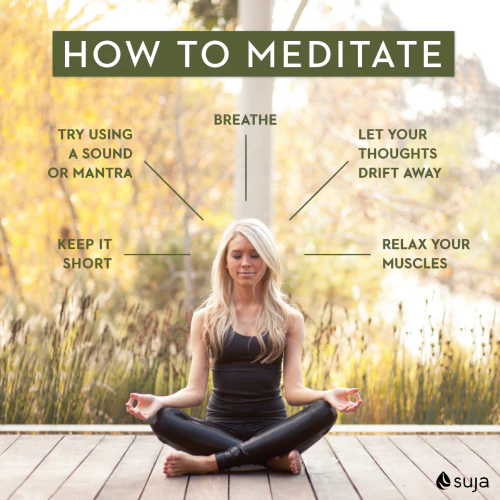What is Meditation?
Meditation is the art of mental focus, quieting the mind’s constant chatter to achieve inner peace. It’s about being fully present and observing thoughts without judgment. While often linked to spirituality, meditation definition is now recognized as a powerful tool for managing stress, boosting mental clarity, and enhancing overall well-being.

The History and Evolution of Meditation
joe dispenza Meditation’s roots trace back to ancient India, China, and beyond. Initially intertwined with spiritual traditions like Hinduism, Buddhism, and Taoism, it was a path to enlightenment and divine connection. As cultures intermingled, meditation evolved, adapting to diverse philosophical and spiritual landscapes.
The West embraced meditation in the 20th century, thanks to pioneers like Maharishi Mahesh Yogi. Today, it’s a global phenomenon, practiced in homes, offices, and spiritual centers. From its spiritual origins to modern secular applications, meditation remains a timeless tool for inner peace and well-being.

Types of Meditation
Meditation comes in many forms, each with its unique approach and goals. Below are some of the most commonly practiced types of meditation:
Mindfulness Meditation
This involves focusing on the present moment without judgment.
It’s about observing thoughts and sensations without getting caught up in them. Mindfulness meditation is often used for stress reduction and increased self-awareness
Concentration Meditation
Concentration meditation involves focusing the mind on a single point of reference, such as a mantra, a candle flame, or a specific sound. The goal is to maintain unwavering attention on the chosen object, minimizing distractions and mental wandering. This type of meditation helps strengthen mental discipline and improve focus.
Loving-Kindness Meditation (Metta)
Loving-kindness meditation, also known as Metta meditation, involves generating feelings of compassion, love, and kindness toward oneself and others. Practitioners begin by directing these positive feelings toward themselves and gradually extend them to loved ones, acquaintances, and even those with whom they have conflicts. This practice fosters empathy, emotional resilience, and a sense of interconnectedness.
Body Scan Meditation
Body scan meditation involves systematically focusing attention on different parts of the body, from head to toe. Practitioners observe physical sensations in each area, acknowledging tension, discomfort, or relaxation without judgment. This practice enhances body awareness and can help release physical and mental tension.
Transcendental Meditation
Transcendental Meditation (TM) is a specific form of meditation that involves silently repeating a mantra to transcend ordinary thought and enter a state of deep relaxation and alertness. TM is often practiced for 20 minutes, twice a day, and has been associated with numerous benefits, including reduced stress and improved cognitive function.
Guided Meditation
Guided meditation involves following the instructions of a teacher or a recorded audio, which leads the practitioner through a meditation process. This type of meditation can be particularly helpful for beginners, as it provides structure and direction. Guided meditations can focus on various themes, such as relaxation, healing, visualization, or personal growth.
The Science Behind Meditation
Meditation is not just a spiritual practice; it has been extensively studied by scientists and researchers who have uncovered its numerous benefits for mental and physical health. The effects of meditation on the brain and body have been demonstrated through various studies, highlighting its potential to transform lives.

Stress Reduction
One of the most well-known benefits of meditation is its ability to reduce stress. Meditation helps lower levels of cortisol, the hormone associated with stress, leading to a calmer and more relaxed state of mind. By practicing meditation regularly, individuals can develop greater resilience to stress and manage difficult situations more effectively.
Enhanced Focus and Concentration
Meditation, particularly concentration-based practices, can significantly improve attention span and concentration. By training the mind to focus on a single point, individuals can strengthen their ability to concentrate on tasks, reduce mental distractions, and enhance productivity.
Emotional Regulation
Meditation has been shown to improve emotional regulation by increasing awareness of thoughts and feelings and reducing reactivity to negative emotions. Regular meditation practice can help individuals develop a more balanced emotional state, leading to greater emotional stability and resilience.
Improved Sleep
Many people struggle with sleep disorders and find it difficult to relax before bed. Meditation can help by calming the mind and body, making it easier to fall asleep and enjoy more restful sleep. Practices like mindfulness meditation and body scan meditation are particularly effective in promoting relaxation and improving sleep quality.
Pain Management
Research has shown that meditation can be a valuable tool in managing chronic pain. By altering the perception of pain and increasing mindfulness, individuals can develop a more positive relationship with their pain, reducing its intensity and impact on daily life.
How to Get Started with Meditation
If you’re new to meditation, getting started might seem daunting, but it’s simpler than you think. Here are some steps to help you begin your meditation journey:
Find a Quiet Space
Choose a quiet and comfortable space where you won’t be disturbed. This could be a dedicated meditation room, a corner of your living room, or even a quiet spot in your garden. The key is to create an environment that allows you to relax and focus without distractions.
Choose a Comfortable Posture
Your posture is important in meditation. You can sit on a cushion, or chair, or even lie down if that’s more comfortable. Keep your back straight, shoulders relaxed, and hands resting on your knees or in your lap. The goal is to be comfortable enough to relax, but not so comfortable that you fall asleep.
Focus on Your Breath or a Specific Object
Begin by focusing on your breath. Notice the sensation of the air entering and leaving your nostrils or the rise and fall of your chest. If you find it helpful, you can also focus on a specific object, like a candle flame, or repeat a mantra silently in your mind. The goal is to anchor your attention and bring your mind to the present moment.
Handle Distractions with Patience
It’s natural for your mind to wander during meditation. When this happens, gently bring your focus back to your breath or object of concentration. Avoid judging yourself for getting distracted; instead, treat each distraction as an opportunity to refocus and deepen your practice.
Incorporate Meditation into Your Daily Life
To experience the full benefits of meditation, it’s important to make it a regular part of your routine. Start with just a few minutes a day and gradually increase the duration as you become more comfortable with the practice. Consistency is key, so try to meditate at the same time each day, whether it’s in the morning, during a lunch break, or before bed.
Conclusion
Meditation is a powerful practice that offers a wide range of benefits for the mind, body, and spirit. Whether you’re seeking stress relief, emotional balance, improved focus, or spiritual growth, meditation can help you achieve your goals.
By finding a quiet space, choosing a comfortable posture, focusing your mind, and handling distractions with patience, you can develop a sustainable meditation practice that supports your overall well-being. As you continue your meditation journey, you may discover new depths of inner peace, clarity, and contentment.



